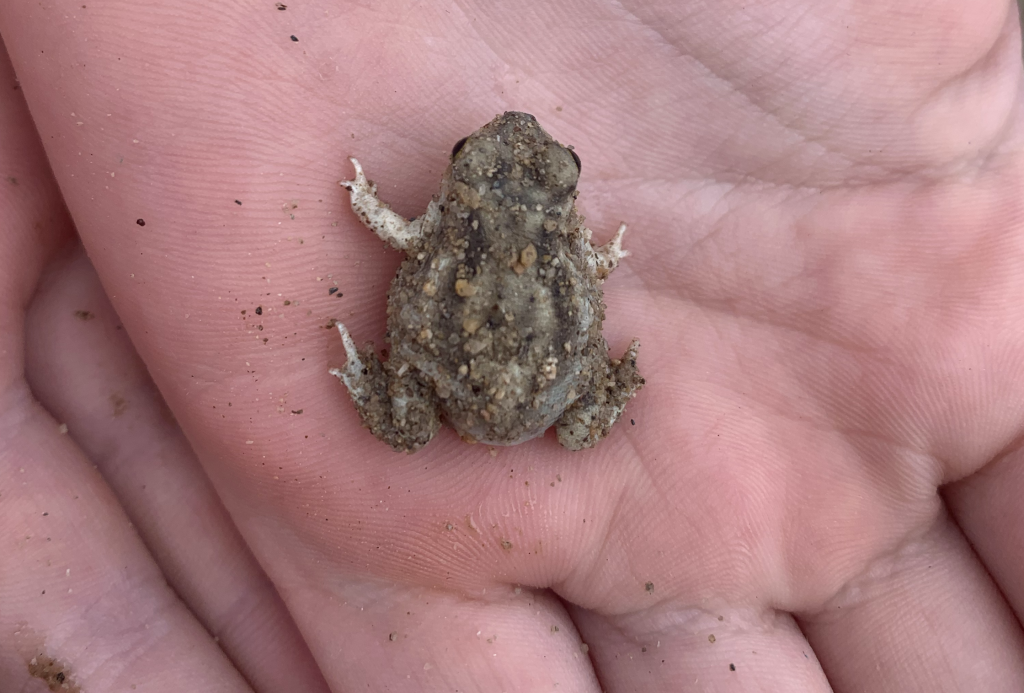
I returned back to El Sargento from the United States on the 12th of September, just in time to catch the first big rain event of the year: Tropical Storm Ileana. I had been watching this storm form on radar, trying to figure out how to pronounce “Ileana.” I knew the area had not received much rain yet this year, and I was very excited at the prospect of a rainy arrival to Baja. When I arrived — the day before the storm — as I exited the terminal at San Jose del Cabo, I smacked into a wall of heat and humidity. Though I momentarily questioned my decision to return to the hot and humid desert, the idea of rain kept my spirits high.
I love rain events in Baja because Couch’s Spadefoot Toads — somewhat unexpected residents of the driest state in North America — erupt from the ground to breed. Historically, after a big rain, a toad pond has appeared in our neighbors’ driveway; due to construction, unfortunately, this one-week-wonder pond no longer fills. So I have been working on a replacement pond. The morning of the storm, I heard raindrops on my roof at around 5am. Iliana was now officially a tropical storm. As soon as the sun rose, I was outside. The first six hours or so were a bit anticlimactic because all we experienced was a steady drizzle, followed by the rain stopping all together. It had not rained enough to fill a toad pond.
However, there were plenty of toads! Big ones, little ones, green ones and round ones. I even found a male calling in a little puddle. In the desert, standing water doesn’t last long, so these “toads” have one of the quickest breeding cycles of all frogs. I say “toads” because spadefoots aren’t actually toads; they are their own kind of frog that has evolved a very similar body plan. But anyway, these spadefoots will lay eggs, and the eggs will hatch within 48 hours! Then the tadpoles have a race to grow legs before the puddle dries up. They can transform from tadpole to frog in a little as seven days, although it is often a bit longer.
Hopefully we will have a bigger rain later this year, but it is not unusual that spadefoots will go years without having a chance to breed. Sometimes they only come up out of the ground once a year, or less if there is no rain. They often bury themselves up to a meter underground!
After the rain ended, I checked all the local cattle guards for stuck creatures. I found and helped many trapped frogs. Unfortunately, stuck creatures are real problem in La Ventana. Cattle guards may be useful pieces of infrastructure, but we need to stop making them with big concrete traps at the bottom. If you are going to build a cattle guard, please try to make an escape route for small creatures. One of the best ways to provide an easy way out is to leave slanted edges, or even just dirt, on either or both ends of the trench so creatures can escape.
Fall Reptile Walks! I am going to start this WhatsApp group for reptile walks, to make things a bit easier, and help account for uncertain weather conditions. Join the group here.